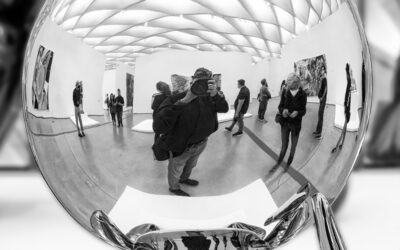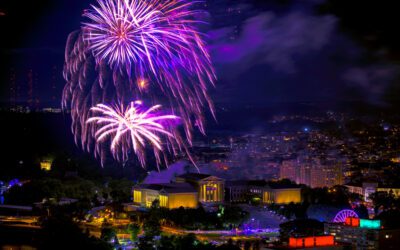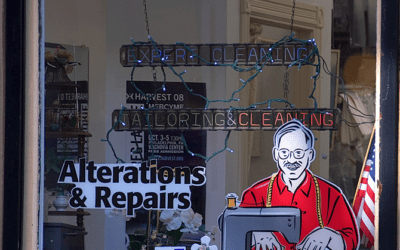When you view and photograph animals in the wild, safety must be every traveler’s primary concern. Use these tips to help you remain safe on your wildlife adventures.
 Whether it’s Antarctica, Yellowstone, Greenland, the Everglades, the Galapagos, Svalbard, the Amazon, the Congo, the Alaska wilderness, the Serengeti or elsewhere where wild animals can be found in their native habitat, tourists need to understand that they are guests in the animals’ home. They need to treat the animals with respect, if for no other reason than for their personal safety.
Whether it’s Antarctica, Yellowstone, Greenland, the Everglades, the Galapagos, Svalbard, the Amazon, the Congo, the Alaska wilderness, the Serengeti or elsewhere where wild animals can be found in their native habitat, tourists need to understand that they are guests in the animals’ home. They need to treat the animals with respect, if for no other reason than for their personal safety.
Many are planning trips or about to take journeys already booked to see wildlife across the globe, roaming, flying and swimming as they have for centuries. It’s totally different than what we see in zoos, aquariums and aviaries. I’ve been fortunate to travel across the world, trek on trails through national parks, journey on small ships, snorkel and dive to see the infinite variety of life on Earth.
I’ve seen and photographed marvelous creatures like polar bears in the Arctic, penguins in the Antarctic, bison in Yellowstone, whales at Hawaii, moose in Maine, boobies in the Galapagos, and muskox in Greenland. I’ve studied their natural habits and learned their value to humanity. I’ve understood how important they are today in the 21st century. I’ve also learned how many of these residents look tame, even docile to the untrained eye, but are inherently dangerous if we don’t respect them.
When we travel to see and photograph wildlife safety must be our prime concern.
Safety must be the traveler’s prime concern whenever we travel to see and photograph wildlife, not getting the perfect photograph or the close-up selfie.
Here are my tips as a wildlife photographer, naturalist and conservationist to keep you safe on your travels to see and photograph animals in the wild.
Research is essential for traveler enjoyment and safety during journeys to view and photograph wildlife.
Research the locations:
Long before leaving on your journey, research your locations. The islands of the Galapagos, the African savannah and the fjords of Greenland are obviously very different locales. Visitors to each need to learn about the terrain and the specific areas where you’ll be hiking and possibly riding. Travelers need to understand both the danger posed by the animals and the dangers and difficulties they may face from the terrain itself. As a photographer, that research can also enable me to choose the right photo equipment for my destinations.
Research the wildlife:
Learn about the various animals you may or likely will see. The more you know about their habits, behavior, personality, proclivities, etc., the safer, more satisfying and the more enjoyable your visit will be. Pay particular attention when learning about each animal’s “circle of fear.”
The “circle of fear” is an area surrounding an animal which forms its alert zone. As we near animals, their stress increases, sometimes rapidly. Eventually, they will become more and more afraid and/or aggressive. Their actions may be highly unpredictable. Some will run/fly off, while others will attack. The size of the ‘”circle of fear” is variable. It depends on the animal’s attitude from moment to moment. Understanding it is essential to staying safe. We need to know what to do and how to behave when we encounter animals in the wild.
Just last year two American tourists were injured in a crocodile attack in Puerto Vallarta, Mexico. Crocodiles are not uncommon in the waters in which they went swimming.
They either were unaware of the threat, or ignored it. Either way, they were lucky to have survived.
Wildlife photographers have a maxim, “Use your zoom, give them room.”
Professional, qualified local guides can make a major difference for traveler enjoyment and safety on journeys to view and photograph wildlife.
Use a highly qualified local guide:
Qualified local guides bring to journeys not only the ability to sight wildlife and take you to likely spots to find them, but they bring both the wildlife knowledge and expertise about their identities, habits personality, etc. that you likely don’t have. Their expertise can keep you safe, as long as you listen to them and follow their directions precisely. They will also bring local knowledge, essential to finding wildlife to see and photograph and maintain your safety. Using a professional guide can be lifesaving.
A group I was in, led by professional guides, had armed guards protecting us from polar bears while hiking in the Svalbard archipelago. Polar bears, especially when hungry and hunting, can be very dangerous.
Be aware of the weather:
Jungles can be very tough places when it rains. Flooding rivers and streams make paths and roads impassable. Deserts can be extremely dangerous in sandstorms. Plains-type areas can be dangerous in unexpected storms, which could cause flash floods. Be prepared and wear the right clothing.
You are not in a zoo or aquarium when you’re in the wild.
You’re not in a zoo when in the wild:
Never get too close to wild animals, even small ones, as many have sharp claws and talons. Unlike in the zoo, there are no bars protecting you from animals in the wild. Never touch a wild animal. For example, grizzly bears in Denali are dangerous and travelers/hikers need to be cautious. Moose in Maine are unpredictable. Picking up a cute black bear cub in Arkansas can be a death sentence.
During the summer of 2020 a visitor in Romania tried to stand near a large bear to pose for photos with them. Had she studied their behavior, she would have known that when you get too close, bears will attack. This one lunged at her and she managed to barely escape.
At Denali, U.S. National Park Service rangers tell visitors to stay at least 300 yards (275 meters) from bears and 25 yards (23 meters) from other animals, dens and nests. These are good rules of thumb.
Selfie stylists must not allow themselves to have tunnel vision to stay safe when among wild animals.
Selfie stylists are well known to get so wrapped up when doing wildlife photography and have such tunnel vision because of their concentration and desire to get the perfect selfie that too often they solely view the animal through their viewfinder or cellphone. Unfortunately, that means they rapidly lose their perception of their distance to the animal, quickly getting themselves into serious trouble. Don’t let that happen.
In June, 2022, a 72-year-old woman was gored several times in Yellowstone by a 2,000-pound bison after she apparently got within ten feet of the bison multiple times to get a close-up photo.
Avoid young animals:
While many animals are generally safe, they can become a nightmare if they think you endanger their offspring. If you discover bear cubs on the trail or in a meadow, for example, you shouldn’t pick them up or pet them and immediately head back the way you came. Momma bear is likely within striking distance, and you may become dinner if you linger, especially if you touch them.
Having the right gear in an emergency can make all the difference.
Bring the right gear:
If you’re hiking in the wild, bring some safety gear. At the least, bring a GPS, Sat phone in case of an emergency, flare gun with flares, a small mirror for signaling, a first aid kit and an air horn. They can come in very handy in case of problems.

(Image: Lion on top of old Range Rover Copyright © 2023 NSL Photography. All Rights Reserved.)
READ ALSO:
Stupid travel mistakes and how to avoid them
After many years working in corporate America as a chemical engineer, executive and eventually CFO of a multinational manufacturer, Ned founded a tech consulting company and later restarted NSL Photography, his photography business. Before entering the corporate world, Ned worked as a Public Health Engineer for the Philadelphia Department of Public Health. As a well known corporate, travel and wildlife photographer, Ned travels the world writing about travel and photography, as well as running photography workshops, seminars and photowalks. Visit Ned’s Photography Blog and Galleries.



